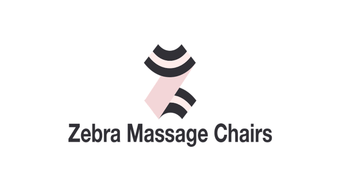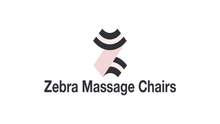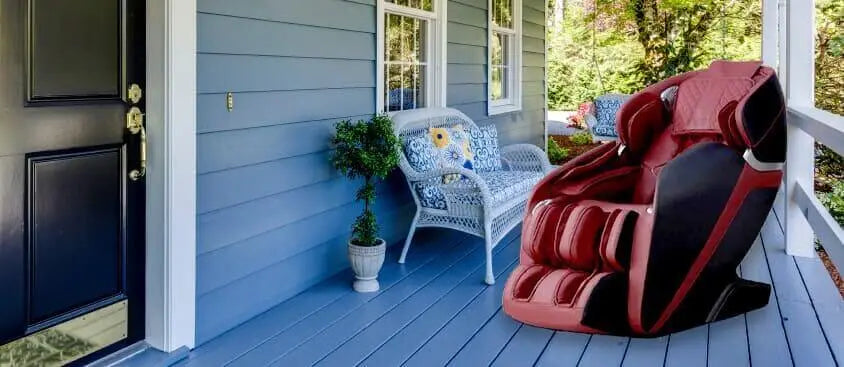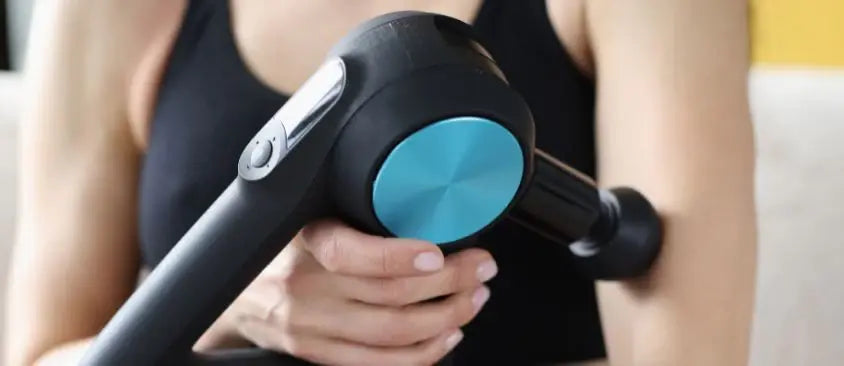Massage Chair vs. Regular Massage: 15 Key Differences to Help You Choose [Expert Guide]
Are you torn between the convenience of a massage chair and the personal touch of a regular massage? You're not alone. In this expert guide, we'll explore 15 key differences between massage chairs and traditional massages to help you make an informed decision.
From the evolution of massage techniques to cutting-edge technologies, we'll dive into:
• The history and benefits of both options
• Advanced features of modern massage chairs
• Specialized techniques used by trained therapists
• Health benefits for your body and mind
• Cost analysis and accessibility considerations
• User experience and customization options
Whether you're a first-time massage chair shopper or a regular spa-goer, this comprehensive comparison will equip you with the knowledge to choose the perfect relaxation method for your needs and budget. Let's unravel the world of massage and find your ideal path to wellness!
Massage Chair vs. Regular Massage: 15 Key Differences
Ever found yourself torn between the allure of a high-tech massage chair and the personal touch of a professional massage therapist? You're not alone.
In today's fast-paced world, finding the perfect way to unwind is crucial. But with so many options, how do you choose?
Let's dive into the world of massage chairs and regular massages, exploring 15 key differences that'll help you make an informed decision.
Imagine coming home after a long day, sinking into your massage chair, and letting it work its magic. Now, picture yourself on a massage table, feeling the skilled hands of a therapist working out your knots.
Both scenarios sound tempting, right?
From convenience and cost to personalization and health benefits, we'll cover it all. Whether you're a massage enthusiast or a first-time massage chair shopper, this guide will help you navigate the pros and cons of each option.
Ready to discover which massage experience is right for you? Let's get started!
💡 Key Takeaways: Understanding the key differences between massage chairs and regular massages is crucial for choosing the relaxation method that best suits your lifestyle, budget, and health needs.
Evolution of Massage Techniques
Massage therapy has come a long way since its ancient roots. From traditional hands-on techniques to modern technological marvels, the world of massage has evolved dramatically.
Think about it. Once upon a time, getting a massage meant visiting a massage parlour or spa. You'd lie on a table, waiting for the skilled movements of the masseur to ease your tension.
Fast forward to today, and you have the option of a full-body massage in your own living room, courtesy of a high-tech chair.
But how did we get here? Let's take a quick journey through time.
History of Massage Chairs
The story of massage chairs begins in the 1950s. Picture a world where rock 'n' roll was just taking off, and so was the idea of automated relaxation.
The first massage chair was a far cry from the sleek, feature-packed models we see today. Imagine a simple recliner with vibrating components - that was the low-end massage chair of yesteryear.
As technology advanced, so did these chairs. By the 1980s, high-end massage chairs were starting to resemble the sophisticated relaxation stations we know today.
Traditional Massage Therapy Origins
Now, let's rewind even further. Traditional massage therapy has roots that stretch back thousands of years.
Picture ancient civilizations, where healers used touch to soothe aches and pains. From China to Egypt, massage was a respected healing art.
Fast forward to the 19th century, and we see the birth of techniques like Swedish massage. Imagine lying on a massage table, experiencing a blend of science and art that's been refined over centuries.
💡 Key Takeaways: The evolution of massage techniques, from ancient hands-on practices to modern massage chairs, reflects our ongoing quest for effective relaxation and healing methods.
Benefits of Massage Chairs
Ever dreamed of having a personal masseuse at your beck and call, 24/7? That's essentially what a massage chair offers.
Let's dive into the perks of owning your own relaxation station.
First up, convenience. Imagine coming home after a grueling day at work. Your muscles are tight, your back is aching. Instead of booking an appointment or driving to a spa, you simply sink into your massage chair.
With the push of a button, you're transported to a world of comfort. The entire body gets attention, from your neck to your calves.
But it's not just about accessibility. Many high-end chairs offer features like zero gravity positioning. Picture yourself suspended in a weightless state, stress melting away as the chair works its magic.
Consistency is another big plus. Your massage chair doesn't have off days. It delivers the same quality massage, every single time.
And let's talk about customization. Modern chairs come with a variety of programs. Whether you need a gentle touch or deep tissue work, there's a setting for you.
Advanced Technologies in Massage Chairs
Now, let's geek out a bit about the tech. Today's massage chairs are like relaxation robots, powered by sophisticated massage chair processors.
Imagine a chair that can detect your body shape and adjust accordingly. That's the reality with body scanning technology.
Then there's the type of track. S-track, L-track, SL-track - these determine how the rollers move along your spine. It's like having a tiny, precise masseuse inside your chair.
Some chairs even offer AI-powered massage. They learn your preferences over time, creating a truly personalized experience.
💡 Key Takeaways: Massage chairs offer unparalleled convenience, consistency, and cutting-edge technology, providing a personalized and always-available massage experience in the comfort of your home.
Advantages of Regular Massage
While massage chairs offer incredible convenience, there's something special about the human touch. Let's explore why many still prefer the traditional route.
Picture this: you walk into a serene spa, greeted by calming music and soothing aromas. A trained massage therapist welcomes you, asks about your concerns, and tailors the session to your needs.
That personalized touch is hard to replicate. A therapist can feel the knots in your muscles, adjusting pressure and technique on the fly. It's like having a custom-tailored suit, but for your muscles.
Then there's the human connection. In our increasingly digital world, the value of human interaction shouldn't be underestimated. A massage therapist provides not just physical relief, but often emotional support too.
Flexibility is another key advantage. Maybe you need extra attention on your shoulders one day, and your lower back the next. A therapist can easily adapt, focusing on your changing needs.
And let's not forget the variety. From Swedish to deep tissue, hot stone to aromatherapy, the world of massage therapy is vast and varied.
Specialized Massage Techniques
Speaking of variety, let's dive deeper into some specialized techniques:
1. Deep Tissue Massage: Imagine those stubborn knots finally melting away. This technique targets the deeper layers of muscle and connective tissue.
2. Sports Massage: For the athletes among us, this can be a game-changer. It's designed to prepare the body for athletic activity and help prevent injuries.
3. Aromatherapy Massage: Picture your sense of smell enhancing your relaxation. Essential oils are used to boost the massage's effects on your mood and well-being.
4. Hot Stone Massage: Envision warm, smooth stones gliding across your skin, easing tension in ways that hands alone can't.
Each of these techniques offers unique benefits, addressing specific needs and preferences.
💡 Key Takeaways: Regular massages offer unparalleled personalization, human connection, and a wide variety of specialized techniques, providing a holistic approach to relaxation and healing that adapts to your changing needs.
Key Features of Massage Chairs

Ever wondered what makes the best full body massage chair tick? Let's dive into the exciting world of massage chair features.
Picture this: you sink into your chair, and it immediately starts scanning your body. This isn't science fiction - it's a standard feature in many high-end chairs. The chair maps your body's contours, ensuring a tailored massage experience.
Now, let's talk about those magical rollers. They're the tiny hands inside your chair, kneading and pressing your muscles. Some chairs use an S-track design, following the natural curve of your spine. Others use an L-track, extending the massage all the way to your glutes and thighs.
But it's not all about rollers. Many chairs incorporate air compression technology. Imagine gentle airbags inflating and deflating, squeezing your arms, legs, and feet. It's like a full-body hug!
And let's not forget about heat. A heated massage seat can take your relaxation to the next level. It's like having a warm compress working in tandem with your massage.
Some key features to look out for include:
1. Zero Gravity Positioning
2. Body Scanning Technology
3. 3D or 4D Roller Technology
4. Multiple Massage Techniques
5. Customizable Programs
6. Bluetooth Speakers
7. Remote Control or Smartphone App
Remember, the ideal massage chair offer will depend on your specific needs and preferences.
💡 Key Takeaways: Modern massage chairs offer a wide array of sophisticated features, from body scanning and diverse roller technologies to heat therapy and customizable programs, providing a comprehensive and personalized massage experience.
Health Benefits Comparison
When it comes to health benefits, both massage chairs and regular massages have a lot to offer. Let's break it down and see how they compare.
Imagine your body as a complex machine. Over time, stress and strain can cause this machine to work less efficiently. Both types of massage act like a tune-up, helping to keep everything running smoothly.
Let's start with muscle tissue. Both methods can help relax tense muscles, improve circulation, and reduce soreness. Picture those tight knots in your shoulders finally loosening up after a session.
Now, think about your connective tissue. This is where regular massages might have an edge. A skilled therapist can target specific areas of fascia (the connective tissue that surrounds your muscles), helping to improve flexibility and range of motion.
But don't count out massage chairs just yet. They excel in consistency and frequency. Imagine being able to address a repetitive use injury with daily short sessions in your chair.
Physical Health Improvements
Both massage chairs and regular massages offer significant physical health benefits:
1. Pain Relief: Whether it's back pain, neck tension, or sore muscles, both can help alleviate discomfort.
2. Improved Circulation: The kneading and pressure help boost blood flow throughout your body.
3. Better Posture: Regular sessions can help realign your body and improve posture over time.
4. Faster Recovery: Athletes can benefit from either method to speed up muscle recovery after intense workouts.
The preventive use of a massage chair can be particularly beneficial. Imagine nipping those little aches in the bud before they become bigger problems.
Mental Health Benefits
The benefits of massage therapy extend beyond the physical. Both methods can have a profound impact on your mental well-being:
1. Stress Reduction: Picture your worries melting away as you relax into a massage.
2. Improved Sleep: Many people report better sleep quality after regular massage sessions.
3. Mood Enhancement: The release of endorphins during a massage can boost your mood and overall sense of well-being.
4. Anxiety and Depression Management: While not a substitute for professional mental health care, massage can be a helpful complementary therapy.
Remember, whether you prefer the strong pressure of a deep tissue massage or the gentle touch of a massage chair, the key is finding what works best for your physical and mental needs.
💡 Key Takeaways: Both massage chairs and regular massages offer substantial physical and mental health benefits, from pain relief and improved circulation to stress reduction and better sleep, with the choice between them depending on individual needs and preferences.
Cost Analysis: Massage Chairs vs. Regular Massages
When it comes to relaxation, your wallet has a say too. Let's crunch some numbers and see how massage chairs stack up against regular massages in terms of cost.
Imagine you're at a crossroads. On one side, there's a premium massage chair with a hefty price tag. On the other, a series of massage therapy sessions stretching into the future. Which path leads to better value?
Let's start with massage chairs. The initial investment can be substantial. Prices of quality massage chairs can range from $1,000 for basic models to over $10,000 for high-end options. It's like buying a small car, but for relaxation!
Now, regular massages. A typical session might cost anywhere from $60 to $150, depending on location and therapist expertise. Sounds more affordable at first glance, right?
But here's where it gets interesting. Let's do some quick math:
1. Massage Chair:
- Initial cost: $5,000
- Lifespan: 5-10 years
- Cost per year: $500-$1,000
2. Regular Massages:
- Cost per session: $100
- Weekly sessions
- Cost per year: $5,200
Suddenly, that massage chair doesn't seem so expensive, does it?
Of course, this is a simplified comparison. Factors like maintenance costs for the chair or varying frequency of massage sessions can shift the balance.
Remember, the value isn't just about money. Consider the convenience of having a massage chair at home versus scheduling and traveling to appointments.
💡 Key Takeaways: While massage chairs require a significant upfront investment, they can offer better long-term value compared to regular massage sessions, especially for those who enjoy frequent massages.
Accessibility and Availability
When it comes to getting your relaxation fix, accessibility and availability play crucial roles. Let's explore how massage chairs and regular massages compare in this aspect.
Imagine it's late at night, you've just finished a stressful project, and your muscles are screaming for relief. As a massage chair owner, relief is just steps away. You can sink into your chair anytime, day or night, without needing to book an appointment or leave your home.
On the flip side, regular massages require planning. You need to schedule a session, travel to the therapist's location, and work around their availability. It's like the difference between having a personal chef and going to a restaurant.
But here's where it gets interesting. While a massage chair is always available at home, it's not portable. If you're traveling or at work, your trusty relaxation station isn't with you.
Regular massages, however, offer flexibility in location. Many therapists offer mobile services, bringing the massage table to you. It's like having a relaxation delivery service!
For those living in rural areas, a massage chair might be an excellent additional massage solution. Professional massage services might be scarce, making a chair a reliable alternative.
Consider this scenario:
1. Massage Chair:
- Available 24/7
- No appointments needed
- Limited to home use
2. Regular Massage:
- Requires scheduling
- Travel may be necessary
- Can be done at various locations
The choice often comes down to personal preference and lifestyle. Do you value spontaneity and constant access, or do you prefer the experience of going to a dedicated space for your massage?
💡 Key Takeaways: Massage chairs offer unparalleled convenience with 24/7 home access, while regular massages provide flexibility in location and the option for mobile services, making the choice dependent on individual lifestyle and preferences.
User Experience: Consistency vs. Adaptability

When it comes to massage, the user experience can make or break your relaxation journey. Let's dive into how massage chairs and regular massages differ in this aspect.
Imagine you're a creature of habit. You know exactly what you like, and you want it the same way, every time. This is where massage chairs shine. They offer consistency that's hard to beat. Once you've found your perfect settings, you can replicate that ideal massage experience with the push of a button.
Now, picture this scenario. You wake up with a crick in your neck that wasn't there yesterday. A massage chair, while consistent, might not be able to adapt to this sudden change. It's like having a favorite restaurant that always serves the same menu - great when you want your usual, but limiting when you're in the mood for something different.
This is where the adaptability of a human massage therapist comes into play. The movements of the massage therapist can adjust on the fly, responding to your body's needs in real-time. It's like having a chef who can tweak the recipe based on your taste buds that day.
Let's break it down:
1. Massage Chair:
- Consistent experience
- Programmable settings
- Limited adaptability
2. Regular Massage:
- Variable experience
- Personalized attention
- High adaptability
Remember, the ideal massage chair offer tries to bridge this gap with advanced features like body scanning and AI-driven programs. But can it truly replicate the intuition of human touch?
Consider your personal preferences. Do you value knowing exactly what you'll get each time, or do you prefer a massage that can surprise you with its responsiveness?
💡 Key Takeaways: Massage chairs offer unparalleled consistency in user experience, while regular massages provide adaptability and personalized attention, making the choice dependent on whether you prioritize predictability or flexibility in your massage sessions.
Technological Advancements
In the world of massage, technology is constantly pushing the boundaries of what's possible. Let's explore how these advancements are shaping both massage chairs and regular massages.
Imagine stepping into a time machine and traveling back just a decade. The massage chairs of that era would pale in comparison to today's models. Modern chairs are like relaxation robots, equipped with AI, body scanning technology, and a host of other features that were once the stuff of science fiction.
For instance, some high-end chairs now offer 4D massage technology. Picture rollers that not only move up and down, left and right, but also in and out, mimicking the movements of human hands with uncanny precision.
But regular massages aren't being left behind in this tech race. Many therapists are incorporating tools like percussion devices or the use of essential oils with diffusers to enhance the massage experience. It's like adding high-tech sprinkles to an already delicious ice cream sundae.
Here's a quick comparison:
1. Massage Chair Advancements:
- AI-powered personalization
- Body scanning technology
- Zero gravity positioning
- 3D and 4D roller systems
- Bluetooth connectivity for music
2. Regular Massage Advancements:
- Integration of technology-assisted tools
- Use of apps for booking and preference tracking
- Incorporation of VR for enhanced relaxation
While these advancements are exciting, it's important to remember
Conclusion
As we've explored the 15 key differences between massage chairs and regular massages, it's clear that both options offer unique benefits for relaxation and wellness. Whether you prefer the convenience and consistency of a high-quality massage chair or the personalized touch of a trained massage therapist, the choice ultimately depends on your individual needs, preferences, and lifestyle.
Consider factors such as your budget, time constraints, and specific health requirements when making your decision. Remember that massage chairs and regular massages can complement each other, providing a comprehensive approach to your well-being. Whichever option you choose, integrating regular massage into your routine can lead to improved physical and mental health, reduced stress, and enhanced overall quality of life.
We hope this expert guide has provided valuable insights to help you make an informed decision. Embrace the power of massage and take the first step towards a more relaxed, healthier you. Your body and mind will thank you for it!








Leave a comment